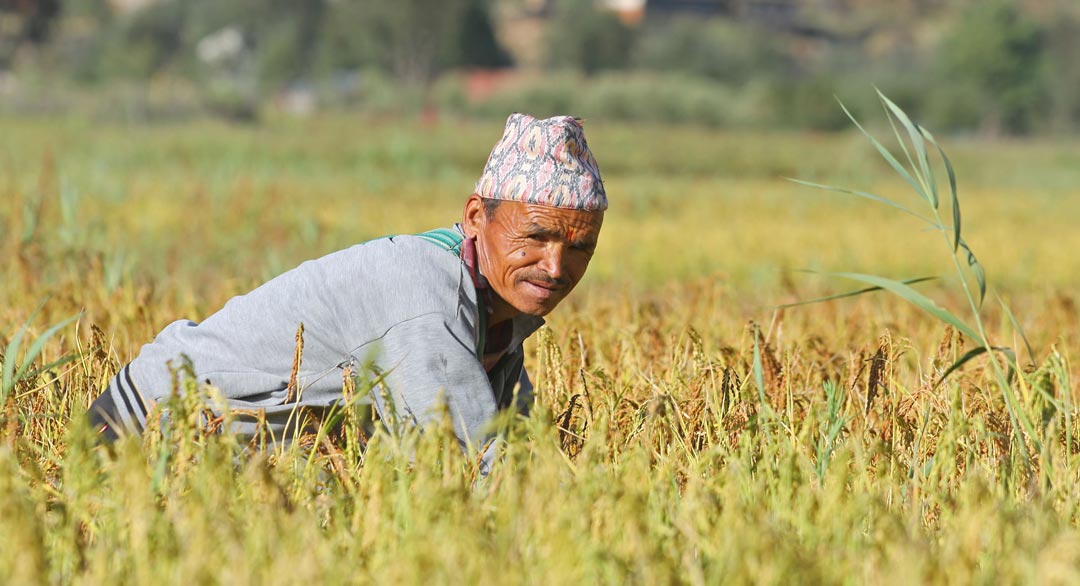Custodian Farmers

Why is agricultural biodiversity important?
Agriculture is the largest global user of biodiversity. Over reliance on a handful of crops puts global food security at risk. Agricultural biodiversity contributes to reducing malnutrition, alleviating poverty and combating climate change. This diversity has been in decline for decades and efforts are needed for its conservation.
Who are ‘custodian farmers’?
Despite this decline, there are still some farmers in every country who actively maintain, adapt and disseminate agricultural biodiversity, and who possess the knowledge needed for its use and cultivation. These are the ‘custodian farmers’ who cultivate diverse crop species and varietal diversity on-farm. The term ‘custodian’ literally means someone who is responsible for looking after something important or valuable.
Custodian farmers are, defined herein as, men and women farmers who actively maintain, adapt, and disseminate agricultural biodiversity and related knowledge, over time and space, at farm and community levels and are recognized by community members for their efforts (Sthapit et al., 2013).
These farmers select varieties adapted to local conditions and preferences, and promote conservation of local diversity among their community, even in the absence of any incentive. They are the champions of in situ and on-farm conservation of agricultural biodiversity. Custodian farmers are often actively supported in their efforts by household members and family tradition.
How do we identify custodian farmers?
- Create a list of potential custodian farmers based on existing knowledge, such as who is considered to be a progressive or knowledgeable farmer in the community.
- Conduct a quick key informant survey to study the characteristics, functions and roles of custodian farmers in use and conservation.
- Estimate the richness of species and varieties among the custodian farmers to assess the diversity maintained.
- Document rare, unique and specific traits maintained, adapted and promoted.
- Validate local crop diversity at household level.
- Probe and document major sources of motivation.
What are their sources of motivation?
Custodian farmers are driven by a variety of motivations and usually their motivations tend to be non-economic in nature. While, custodian farmers might have acquired the skills and technical know-how of agricultural biodiversity to help them improve their income and livelihoods. However, over time, their aesthetic, intellectual or service oriented motivation overcome the economic reasons, which is what distinguish them from other knowledgeable farmers. So far, we have found custodian farmers to be motivated by the following reasons:
- Personal – driven by passion, preferences or the compulsion to conserve diversity
- Social – motivated by community development, protecting inheritance and family pride
- Economic – interested in safeguarding diversity for economic reasons
- Cultural – driven by awareness of the link between genetic and cultural diversity
- Environmental – inspired by improving the ecosystem, health and services
- Policy/ Rules – restricted by policy
What are the benefits of collaborating with them?
- A low cost approach
- Provides key genetic resources at local level for scientists and other farmers
- Provides nodal points for regeneration, dissemination and field testing
- Allows continuous updating, innovation and adaptation of knowledge
- Empowers farmers by recognizing their breeder and conservation role
- Local resource person for Diversity Field School and grassroots breeding
- Conserves rare types that fall outside of the priority list of national and international genebanks.
For more information
Sthapit, B.R., H. Lamers and R. Rao. 2013. Custodian Farmers of Agricultural Biodiversity: Selected profiles from South and South East Asia. Proceedings of the Workshop on Custodian Farmers of Agricultural Biodiversity, 11-12 February 2013, New Delhi, India.
Gruberg, H., G. Meldrum, S. Padulosi, W. Rojas, M. Pinto, and T.A. Crane. 2013. Towards a better understanding of custodian farmers and their roles: insights from a case study in Cachilaya, Bolivia. Bioversity International, Rome and Fundación PROINPA, La Paz.
Sthapit, S., G. Meldrum, S. Padulosi, and N. Bergamini (eds). 2015. Strengthening the role of custodian farmers in the national conservation programme of Nepal, Proceedings of the National Workshop 31 July to 2 August 2013, Pokhara, Nepal, Bioversity International, Rome Italy and LI-BIRD, Pokhara, Nepal